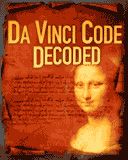
This question has never been pushed underground, either, a Dan Brown claims. Thomas Aquinas have been undecided on the issue, and in the Eastern Church, the three are seen as distinct figures. This has always been a disputed identification, however. What is true is that in the sixth century, Pope Gregory the Great conflated the figures of Mary Magdalene, the penitent woman in Luke 7, and Mary, the sister of Martha and Lazarus, saying that before her conversion, Mary had been a prostitute or adulteress. He also says Jesus intended for Mary to be the head of his Church (celebrating the sacred feminine, remember) but that Peter wrested power from her, suppressed evidence of Jesus' real intentions and set into motion a 2,000-year conspiracy to demonize Mary Magdalene.īut Mary Magdalene is honored as a saint in the Catholic Church. According to Brown, after the crucifixion, Mary, pregnant with Jesus' child, moved to France and became the root of the Merovingian royal family. Who was Mary Magdalene according to Dan Brown?īrown says Mary Magdalene was of royal blood, of the tribe of Benjamin, and Jesus' wife. She was healed of demon possession by Jesus (Luke 8:2), was present at the Crucifixion and the tomb and was sent by the Risen Jesus to the apostles to announce the Good News.

Mary Magdalene is mentioned 12 times in the Gospels. Who was Mary Magdalene according to the Scriptures? In addition, the Last Supper is a dramatization of a scene from the Gospel of John, in which the institution narrative is not even described. Unfortunately for Brown, art historians tell us that the effeminate-looking John is quite a typical representation for the time, as is a Last Supper portrayal emphasizing betrayal rather than the institution of the Eucharist. First, the idea that Da Vinci used any kind of code pertaining to any issue Dan Brown raises is unsupported by art historians.īrown says that in this painting Da Vinci is telling us that the figure always identified as John the Evangelist is really Mary Magdalene, and that these two figures together form an "M," and that, because there is no grail in the picture, Da Vinci is telling us the "grail" is the sacred feminine of Mary Magdalene. These documents have long been understood to be forgeries, placed in the archives by an anti-Semitic supporter of the Vichy government named Pierre Plantard.ĭoes Da Vinci's The Last Supper really contain a code? Brown begins his book with a statement, under the title "Fact," that there are documents supporting the existence of the Priory in the Bibliotheque Nationale. The idea of identifying it as the "sacred feminine" and tying it into a supposed bloodline emanating from a union of Jesus and Mary Magdalene is lifted whole cloth from the 1981 classic of inventive esoteric wackiness, Holy Blood, Holy Grail. The legend of the Holy Grail has taken many forms throughout history, but it has always identified the Grail as the cup Jesus used at the Last Supper. Is the Holy Grail really the "sacred feminine?"


Sounds like an intriguing bit of lost history. According to the novel, Leonardo was a member of an ancient secret society called the "Priory of Sion" dedicated to preserving the "truths" that Jesus designated Mary Magdalene as His successor, that His message was about the celebration of the "sacred feminine," that Jesus and Mary Magdalene were married and had children and that the Holy Grail of legend and lore is really Mary Magdalene, the "sacred feminine," the vessel who carried Jesus' children. In Brown's novel, the "Da Vinci code" refers to cryptic messages supposedly incorporated by Leonardo Da Vinci into his artwork. More than 3 million copies (ed: now over 40 million) are in print.

The Da Vinci Code is a novel by Dan Brown that has held one of the top two or three places on best-seller lists since early summer.


 0 kommentar(er)
0 kommentar(er)
